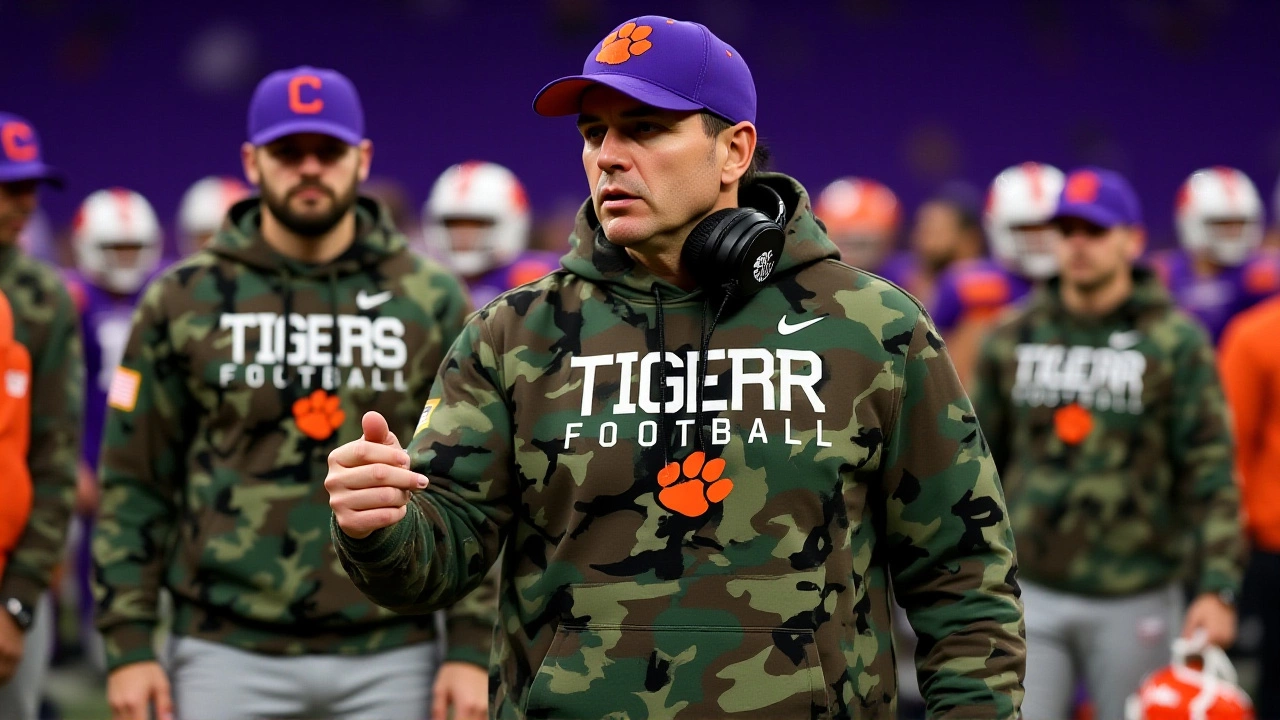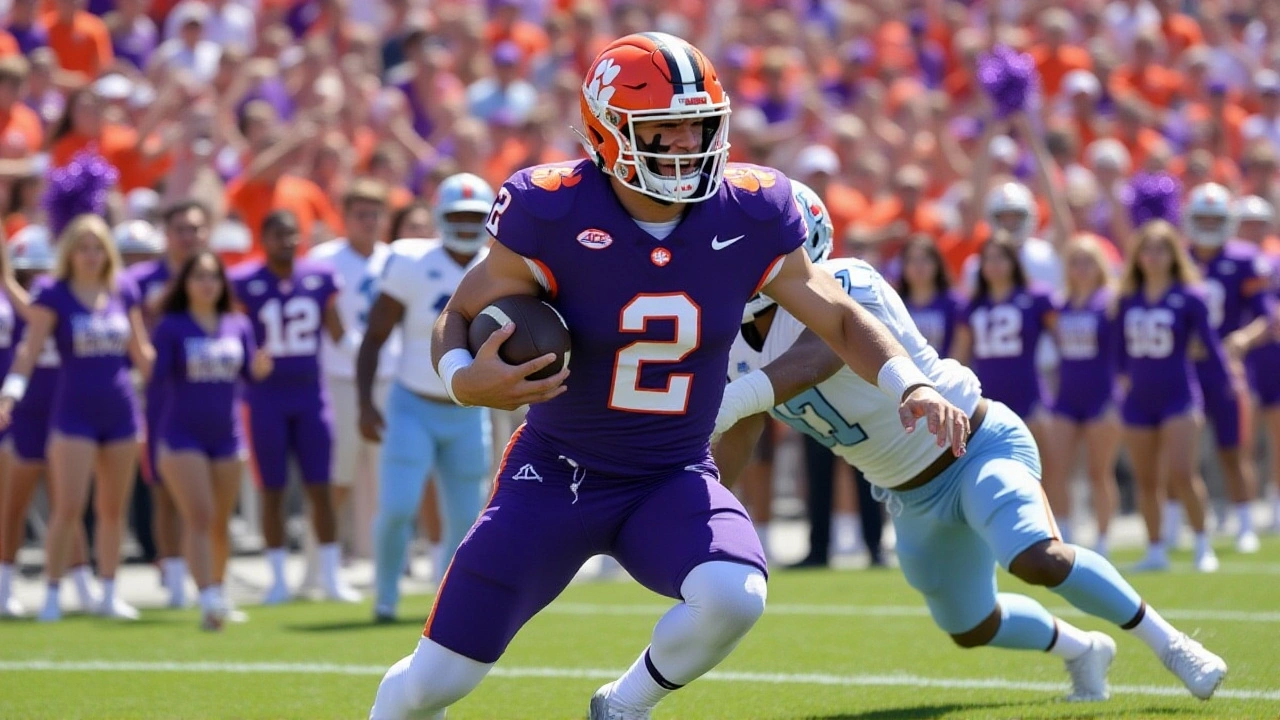On a crisp November Saturday in Death Valley, Clemson Tigers didn’t just win—they cemented a legacy. With a 45-10 thrashing of the Furman Paladins on Military Appreciation Day and November 22, 2025 at Memorial Stadium in Clemson, South Carolina, the Tigers became bowl eligible for the 26th consecutive season. The crowd, draped in orange and white, roared not just for the victory, but for the continuity—a streak that now outlasts most college coaches’ careers.
A Legacy in Motion
The game was more than a season finale—it was a bridge between eras. In 1896, Clemson played its first-ever football game against Furman, winning 14-6 in a matchup where the Paladins had seven years of football under their belt and Clemson had none. Now, 129 years later, the Tigers hold a 45-10-4 all-time series edge. The last time Furman beat Clemson? 1936. That’s before World War II. Before color TV. Before Clemson even had a football stadium named Memorial Stadium.
This year’s edition was a masterclass in dominance. Quarterback Cade Klubnik didn’t need to carry the load—he just needed to strike. His 9-of-15 passing for 159 yards and two touchdowns to wide receiver Antonio Williams set the tone early. By halftime, Clemson led 31-3. The scoreline didn’t flatter them. It reflected control.
Offensive Firepower and Defensive Grit
Running back Chris Denson turned six carries into 106 yards, including a 69-yard burst in the fourth quarter that broke Furman’s spirit. His burst came on a play where the offensive line simply cleared a highway—no hesitation, no traffic. Clemson finished with 456 total yards to Furman’s 271. The Paladins, already without their top running back due to injury, couldn’t match the physicality.
Defensively, Safety Sammy Brown made history with his first career interception, setting up a short field that led to another Clemson touchdown. Defensive end Will Heldt added a sack and two tackles for loss, while the entire unit held Furman to just one touchdown—a 19-yard strike from quarterback Trey Hedden to freshman Evan James in the third quarter.
Even the backups shined. Backup punter Robert Gunn booted a five-yard punt—a rare, almost comical moment in an otherwise flawless special teams performance. And when Ian Schieffelin entered the game to a deafening student section chant, he caught a crucial first-down reception after an earlier goal-line overthrow. It was the kind of moment that reminds you: this team isn’t just built for wins. It’s built for moments.
What the Numbers Don’t Tell You
There’s a quiet tension in the numbers. Clemson Sports Media reports 26 straight bowl appearances. The Greenville Journal says 21. The discrepancy? A matter of counting methodology—whether to include seasons where eligibility was earned via wins or NCAA waivers. But here’s the thing: it doesn’t matter. What matters is that for 26 years, Clemson has been a fixture in December football. That’s not luck. That’s culture.
Coach Dabo Swinney is now 28-4 on Military Appreciation Day, winning his 18th straight game on the occasion. The stadium, packed with veterans and cadets, was a living tribute. Flags waved. Salutes were returned. The scoreboard? Just another footnote.
Furman, meanwhile, ended their season at 3-8. Their lone bright spot? Graduate student kicker Ian Williams nailed a 49-yard field goal before halftime. But he missed a 42-yard attempt in the fourth—wide right. A symbol, perhaps, of the gap between programs.

What’s Next? The Rivalry Awaits
Clemson’s next stop? Columbia. On November 29, 2025, they’ll face the South Carolina Gamecocks in the annual rivalry game. Carolina, ranked outside the top 14 in the SEC, enters as underdogs. But in this series, rankings mean little. It’s pride. It’s history. It’s the last chance to end the regular season with a statement.
For Clemson, it’s not just about the bowl game anymore. It’s about legacy. About proving, year after year, that consistency isn’t an accident. It’s engineered—in practice, in recruiting, in the quiet hours before dawn when no one’s watching.
More Than a Game
Memorial Stadium wasn’t just filled with fans on Saturday. It was filled with fathers and sons, grandparents who remembered the 1981 national title, and cadets who’ll wear the uniform one day. This wasn’t just a win. It was a tradition, alive and roaring.
Frequently Asked Questions
How did Clemson become bowl eligible for the 26th straight season?
Clemson reached six wins this season with their 45-10 victory over Furman, meeting the NCAA requirement for bowl eligibility. This marks their 26th consecutive season achieving that threshold, dating back to 2000. The streak includes seasons where they won conference titles and made playoff appearances, making it the longest active run in FBS football.
Why is the Clemson-Furman series historically significant?
Clemson and Furman played the first-ever football game in Clemson’s history in 1896—a 14-6 win for the Tigers, despite Furman having seven years of football experience. Since then, Clemson has dominated the series 45-10-4, with their last loss to Furman coming in 1936. The matchup, once a rivalry, is now a season-ending tune-up that underscores Clemson’s sustained dominance.
What’s the significance of Dabo Swinney’s 28-4 record on Military Appreciation Day?
Dabo Swinney has never lost a game on Military Appreciation Day at Memorial Stadium, going 18-0 in his tenure on the occasion and 28-4 overall since 2000. The streak reflects the program’s deep respect for service members and its ability to elevate performance on emotionally charged days. Veterans and active-duty personnel are honored with special recognition, and the team often plays with heightened intensity.
Why does the Greenville Journal report 21 straight bowl seasons instead of 26?
The discrepancy stems from whether the count includes seasons where Clemson earned bowl eligibility through NCAA waivers due to COVID-19 disruptions (2020) or forfeited games (2021). The Greenville Journal’s count excludes those, while Clemson Sports Media includes all seasons where the team met the win threshold, regardless of how it was achieved. Both are technically correct—they’re just measuring different things.
What does the loss of Furman’s top running back mean for their future?
Furman’s season was already hampered by the injury to star running back Jalen McMillan in late October. Without him, their offense struggled to generate consistent yardage, averaging just 3.1 yards per carry against Clemson. The team’s rebuilding phase continues under head coach Clay Hendrix, with a focus on developing younger linemen and finding a new offensive identity for 2026.
How might this win impact Clemson’s bowl selection?
Clemson’s win solidifies their position as a top-20 team in the final rankings, likely earning them a spot in the Holiday Bowl, Music City Bowl, or a New Year’s Six berth if they upset South Carolina. Their 10-2 record (pending the rivalry game) and strong defensive stats make them attractive to major bowls seeking competitive matchups with national TV appeal.







Write a comment